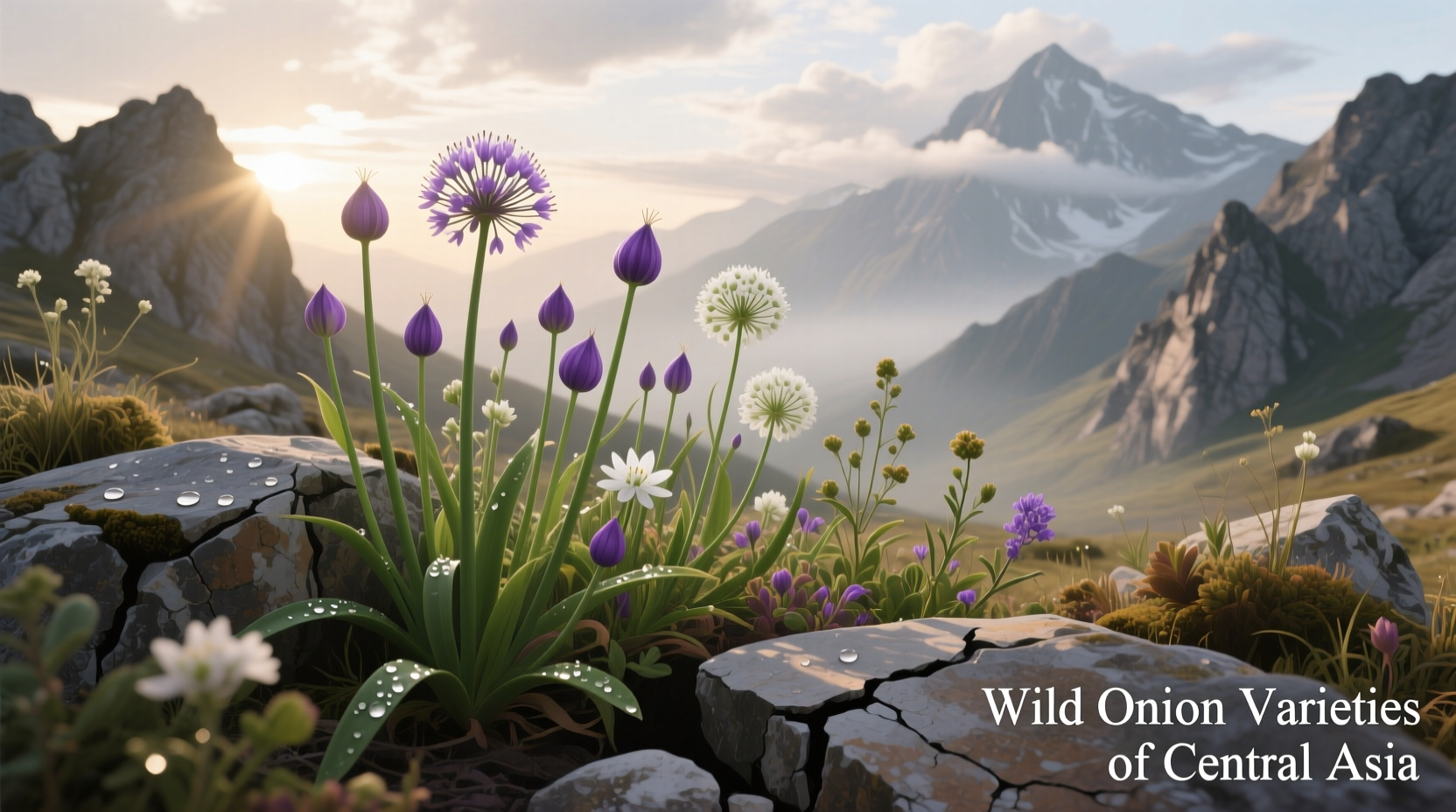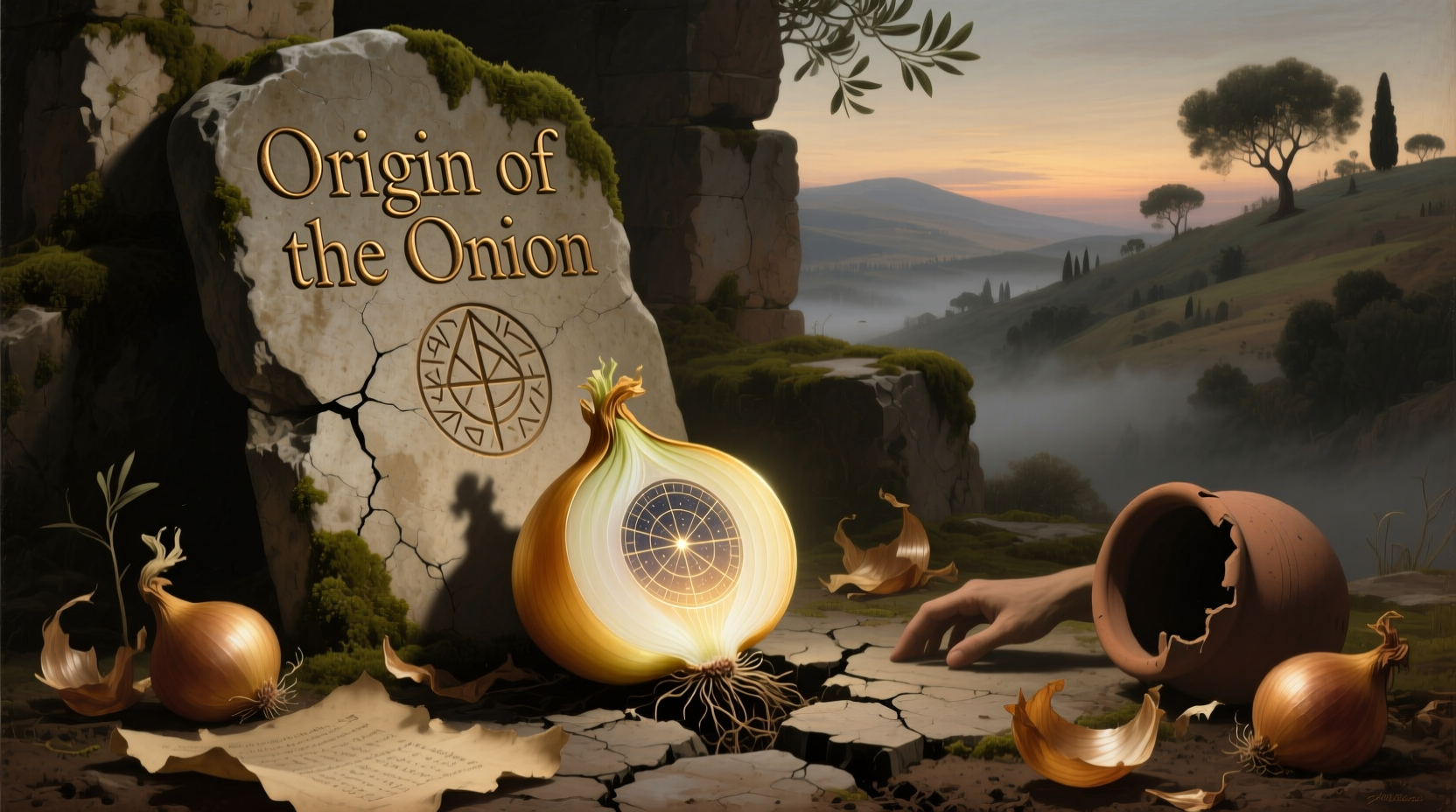For millennia, onions have been fundamental to global cuisines and cultures. This humble bulb's journey from wild grass to kitchen staple reveals fascinating connections between human migration, agricultural innovation, and culinary evolution. Understanding onion origins provides crucial context for appreciating their role in shaping food traditions worldwide.
The Scientific Story of Onion Evolution
Modern genetic analysis confirms onions (Allium cepa) belong to the Amaryllidaceae family, sharing ancestry with garlic, leeks, and chives. Researchers at the University of Göttingen identified Allium vavilovii as the closest wild relative, still thriving in the mountainous regions of Turkmenistan and northern Iran. This genetic evidence, published in the Journal of Agricultural and Food Chemistry, establishes Central Asia as the undisputed birthplace of cultivated onions.
| Evidence Type | Location | Time Period | Significance |
|---|---|---|---|
| Archaeological Remains | Pakistani Indus Valley sites | 5,500-3,500 BCE | Earliest physical evidence of cultivated bulbs |
| Written Records | Ancient Egyptian papyri | 3,200 BCE | Documentation of onion cultivation and religious significance |
| Genetic Analysis | Central Asian wild populations | Modern studies | Confirms Allium vavilovii as direct ancestor |
How Onions Spread Across Ancient Civilizations
Their remarkable adaptability allowed onions to travel along early trade routes. By 3,000 BCE, onions reached Mesopotamia, where cuneiform tablets document their use in daily meals and medicinal preparations. Egyptian tomb paintings from 2,500 BCE show workers consuming onions for strength, while the famous Ebers Papyrus (1,550 BCE) lists over 20 medicinal applications for onions.
Archaeobotanists from the Royal Botanic Gardens, Kew have traced onion diffusion through three primary pathways:
- Westward expansion through Persia into the Mediterranean, reaching Greece by 700 BCE
- Easterly movement along the Silk Road into China by 500 BCE
- Southern migration through India, where onions became integral to Ayurvedic medicine

Cultural Significance Through History
Onions held profound symbolic meaning across ancient societies. Egyptians revered them as symbols of eternity due to their concentric layers, often placing them in tombs as sacred offerings. Greek athletes consumed onions before competitions to boost strength, while Roman naturalist Pliny the Elder documented over 700 medicinal uses for onions in his Natural History.
Their durability during long voyages made onions essential provisions for explorers. When Christopher Columbus reached the Americas in 1492, he deliberately brought onion seeds to establish European crops in the New World. By the 16th century, Spanish missionaries had introduced onions to what is now California, where Native American tribes quickly incorporated them into traditional foodways.
Modern Onion Diversity and Cultivation
Today's commercial onions represent just a fraction of the diversity developed through centuries of selective breeding. The National Onion Association recognizes over 20 major varieties, categorized by color (yellow, red, white) and day-length requirements (short-day, intermediate-day, long-day). Modern agricultural research continues to develop disease-resistant strains while preserving heirloom varieties like the Italian Cipolla di Tropea and the Japanese Negi.
Understanding onion origins helps home gardeners make informed choices about varieties suited to their climate. Short-day varieties thrive in southern regions with mild winters, while long-day types perform best in northern latitudes with extended summer daylight. This knowledge, rooted in ancient cultivation practices, remains essential for successful onion growing today.
Practical Applications for Modern Cooks
Knowing onion history informs contemporary cooking techniques. Traditional methods like slow caramelization leverage the Maillard reaction that transforms simple sugars in onions into complex flavor compounds. Different varieties serve specific purposes:
- Yellow onions (87% of U.S. production) offer balanced sweetness for general cooking
- Red onions provide vibrant color and mild flavor for raw applications
- White onions deliver sharp, clean flavor essential in Mexican cuisine
- Shallots (closer genetically to garlic) provide delicate flavor for sauces
Professional chefs recommend storing onions in cool, dark, well-ventilated spaces to maximize shelf life. Never refrigerate whole onions, as moisture accelerates spoilage. Understanding these practical aspects connects modern kitchen practices to ancient wisdom about preserving this essential ingredient.











 浙公网安备
33010002000092号
浙公网安备
33010002000092号 浙B2-20120091-4
浙B2-20120091-4